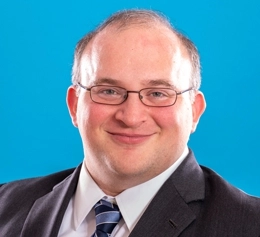There’s been an increasing usage of the term “efficient infringement” in the debate over patent reform. The basic idea is that large companies make an active choice to ignore patents and just pay for them when they lose a lawsuit.
The basic idea isn’t correct. Large companies aren’t making an active choice to ignore patents—in many cases it’s simply not a realistic possibility to identify all of the relevant patents. And once a large company does find out about a patent, they take it seriously—there’s a reason that large companies employ teams of attorneys to deal with licensing other people’s patents.
How Many Patents Might Matter?
There are around 3 million U.S. patents in force. Of those, the number that are potentially relevant to a product will vary widely.
Let’s take something relatively simple—a medical device. Although medical devices are increasingly incorporating wireless and cellular functionality (with the concomitant increase in relevant patents), we’ll assume the device doesn’t have anything like that. We’ll pretend it’s a simple device that treats a particular kind of skin damage. There are 3 or 4 established competitors in that industry.
First, we have to search for all the active patents from those competitors, just to be safe. That might be 1,000 patents. Next, we have to search the other 3 million patents to try and identify non-competitor patents that might be relevant. To do that, we have to have a good understanding of the operation of the device (which requires engineers spending significant time educating lawyers, since there probably isn’t a functional product or accurate documentation yet) and then to describe that operation in ways that are useful to conducting searches. Maybe another 1,000 patents come up in this search. Call that $25,000, just to get our initial list of 2,000 possibly relevant patents.
How Many Of Those Need Significant Attention?
Now you have to pay a patent lawyer to go through that list of 2,000. They have to look at all of the claims of each patent. Some can be dismissed quickly—maybe they require an infrared lamp and our device doesn’t have any infrared, or they require the device to attach to the skin with an elastic band and our device is glued on. Some will require more thought. When working as a patent attorney, I conducted this kind of analysis. I typically estimated an average of 5 minutes per patent to make this initial determination of “clearly not relevant” or “more time required.” That’s 165 hours of attorney time. We’ll assume an inexpensive attorney who charges $200/hour. That’s $33,000 to cull our list down. Of that 2,000, we might wind up with 50-100 patents that still require significant thought, and we’ve already spent nearly $60,000.
Now, for each one of those 50-100 patents, we’re going to go through the patent in detail, read the file history, think about how the claims might apply to the product. The goal is to either be able to tell the manufacturer “this patent is unlikely to be a problem” with a convincing argument inside of a single paragraph, or to say “this patent would benefit from an opinion of counsel.” That’s about an hour per patent, for another 50-100 hours, and another $10,000-$20,000 in attorney’s fees. We’re at $70,000-$90,000. We probably have a list of around 20 patents left at this point that require an opinion.
How Many Of Those Need A Formal Analysis?
This kind of document, called an ‘opinion of counsel’, might cost a median amount of $15,000 per patent, as estimated by AIPLAAmerican Intellectual Property Law Association, formerly the American Patent Law Association. DC-based professional organization that represents the interests of the intellectual property community, including the patent bar.. That’s another $300,000, just to get to the point of determining if the patent is infringed and valid. We’re already at nearly $400,000 to clear our relatively simple device, assuming none of the 20 are both valid and infringed. If any of those 20 are infringed and valid, then it’s time to determine whether licensing or product redesign is the appropriate route, which can easily add millions in cost.
A large medical company could absorb an additional $400,000 per product in development costs just to know what patents it might need to license. But again, this is a relatively simple product.
OK, What About Complex Products?
Estimates for modern smartphones are that there are around 250,000 patents that might apply. You know more of them in advance, because of declarations of essentiality, but more of the patents on your list are likely to be relevant for the same reasons—instead of 50 to 100 patents you need to investigate further, a realistic number is on the order of 20,000, with a more complicated investigation required. A conservative estimate for the cost to clear a smartphone would be on the order of $300 million dollars per phone. And that’s just to know what patents you might possibly need to license, not to actually license anything.
That’s also about 1.5 million hours of attorney time. Quite frankly, there aren’t enough IP lawyers in the U.S. to conduct that kind of clearance as a regular business practice.
The idea that large companies aren’t concerned about legal consequences simply isn’t correct. The difficulty is that there are just too many patents to be able to go out and find the important ones—especially when many patents aren’t clear as to what they cover.

